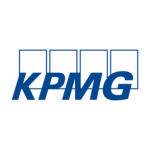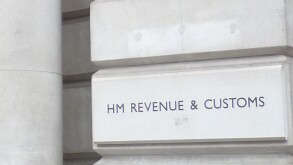The Financial Secretary Paul Chan announced the 2019/20 Hong Kong budget on February 27 2019, outlining the government's plan for the economy and its proposals for changes to taxation.
Chan forecasts a healthy surplus of HK$58.7 billion ($7.4 billion) for 2018-19. Overall, the government expects to have fiscal reserves of HK$1,161.6 billion by March 31 2019, in addition to maintaining this solid position over the next five years.
As expected, livelihood issues were a main focus, and included tax rebates and targeted welfare measures. Most sectors have benefited in some way from the budget, with the financial services sector and the innovation and technology industry as the biggest winners.
That said, education is the single largest area of government expenditure, and should perhaps have received greater attention. In a recent KPMG survey on smart cities, key priorities that respondents identified included strengthening education and developing a future-focused workforce.
The following tax changes were implemented:
A reduction of 75% in profits tax payable for 2018/19, subject to a ceiling of HK$20,000;
Continued commitment to enhance tax concessions related to qualifying corporate treasury centres;
Consider establishing a limited partnership regime and introducing tax arrangements to attract private equity funds to set up and operate in Hong Kong;
Provide a 50% tax concession to marine insurance business; and
Consider introducing tax and related measures to attract ship finance companies to develop ship financing businesses in Hong Kong.
Country-by-country reporting
The most significant change to Hong Kong tax law was the introduction of a transfer pricing (TP) ordinance in mid-2018 which formally codified TP rules and three-tiered TP documentation requirements. An important requirement under new TP rules is that certain Hong Kong companies will be subject to country-by-country reporting (CbCR) requirements.
For CbCR, there are broadly three key steps that apply to multinational enterprise (MNE) groups whose annual consolidated group revenue reaches the specified threshold amount of €750 million ($848 million):
CbC notification by at least one Hong Kong company within a reportable group;
Completion of a new profits tax return (Form BIR51) and supplementary form (Form S2); and
Where applicable, filing a CbC return and a CbC report.
CbC notifications
A CbC notification must be filed by a Hong Kong entity within a reportable group. A MNE group is a reportable group if it had a total consolidated group revenue of at least HK$6.8 billion for the immediately preceding accounting period where the MNE group's ultimate parent entity (UPE) is resident in Hong Kong. For MNE groups whose UPE is resident outside Hong Kong, the threshold amount refers to the threshold specified by the UPE's jurisdiction or, in any other case, is an amount equivalent to €750 million threshold as at January 2015.
A Hong Kong entity of a reportable group must file a written notice with the Inland Revenue Department (IRD) to identify the UPE or the constituent entity responsible for filing the CbC report unless:
It is not the Hong Kong UPE of the group, the group's surrogate parent entity (SPE) resident for tax purposes in Hong Kong, nor the authorised entity to file a CbC return for the group; and
By the notification deadline, another Hong Kong entity of the group has filed such a notice.
The CbC notification must be filed with the IRD electronically through the CbCR portal within three months after the accounting year-end date of the reportable group. It becomes applicable for accounting periods commencing from January 1 2018.
The notification must include the name, address and business registration number of each of the reportable group's Hong Kong entities, the reportable group's turnover, details of the Hong Kong UPE, or a SPE that is resident in Hong Kong for tax purposes. Table 1 summarises both the CbC notification and CbC return filing due dates.
Table 1 |
||
Year-end date |
CbC notification due date |
CbC return filing due date |
December 31 2018 |
March 31 2019 |
December 31 2019 |
March 31 2019 |
June 30 2019 |
March 31 2020 |
June 30 2019 |
September 30 2019 |
June 30 2020 |
September 30 2019 |
December 31 2019 |
September 30 2020 |
The CbC notification and reporting requirements are statutory obligations.
Hong Kong companies within a MNE group should determine whether their group's annual consolidated group revenue exceeds the HK$6.8 billion threshold, and if a CbC reporting notification must be filed with the IRD. The determination of the annual consolidated group revenue will initially be for the immediate preceding year. We expect there will be a number of complexities that need to be resolved. These include:
Even if no consolidated financial statements have been prepared, the total consolidated group revenue must be determined as if the group had been required to produce them;
Where the local entity has a different balance date from that of the UPE, calculations must be made and filing deadlines must be met; and
For private MNE groups, it is important to determine who is the UPE. This is especially relevant to those groups which have private holding companies that hold the operating group companies.













